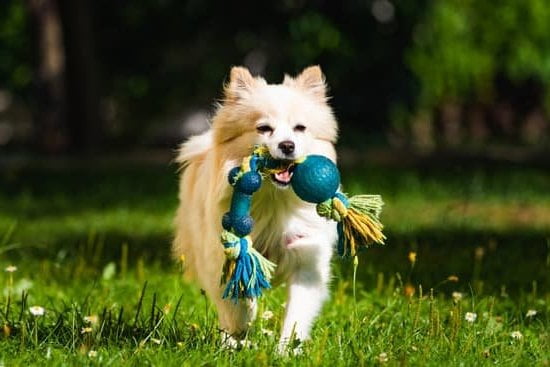Training a dog not to be afraid is crucial for their overall well-being and quality of life. Fearful dogs can experience high levels of anxiety, which can lead to behavioral issues and impact their ability to fully enjoy their surroundings. It is important for pet owners to understand the significance of training a fearful dog and the positive impact it can have on their furry friend’s confidence and happiness.
When a dog exhibits fear, it often stems from past traumas or phobias that need to be recognized and addressed. Identifying the root cause of fear is an essential step in helping your dog overcome their anxieties. This article will guide you through the process of identifying and addressing these underlying issues, while also providing practical techniques to build trust and confidence with your fearful canine companion.
Establishing trust is a fundamental element in training a fearful dog. Building a strong relationship based on trust helps create a safe environment where your dog feels secure enough to face their fears. Through gradual exposure and desensitization techniques, we can safely introduce your dog to triggering situations or objects, allowing them to overcome their fears gradually. Positive reinforcement plays a significant role in this training process, using rewards and treats as incentives for desired behavior.
In the upcoming sections, we will explore various aspects of training a fearful dog, such as counter conditioning techniques, desensitization exercises, when professional guidance may be required, as well as tips on maintaining progress once initial steps have been taken. With patience, consistency, and dedication on your part as a pet owner, you can help your furry companion regain confidence and overcome their fears in order to live a fulfilling life.
Identifying the Root Cause of Fear
Identifying and addressing the root cause of fear is crucial in training a fearful dog. Understanding the specific traumas or phobias that trigger fear in your dog will allow you to target them directly and implement appropriate training techniques. Here are some steps you can take to identify and address the root cause of fear in your dog:
Observe Your Dog’s Behavior
Start by observing your dog’s behavior closely. Take note of any situations, objects, or sounds that consistently provoke fear or anxiety in your dog. This will help you narrow down potential triggers and understand the underlying cause of their fear.
Consider Past Experiences
Reflect on your dog’s past experiences that might have contributed to their fear. Did they have a negative encounter with another dog, experience a traumatic event, or were they improperly socialized during puppyhood? Identifying these past experiences can provide insight into the root cause of their fear and guide your training approach.
Gradual Exposure
Once you have identified the triggers for your dog’s fear, it is important to introduce them gradually through desensitization techniques. This involves exposing your dog to the trigger in controlled increments, allowing them to become more comfortable over time. For example, if your dog is scared of strangers, start by having a stranger at a distance where your dog feels safe and gradually decrease the distance as they become more comfortable.
Seek Professional Help
If you are struggling to identify or understand the root cause of your dog’s fear, it may be beneficial to seek professional guidance from a certified dog trainer or behaviorist. They have experience working with fearful dogs and can provide tailored advice and techniques based on your specific situation.
Recognizing and addressing the root cause of fear is an essential step towards helping a fearful dog overcome their anxieties. By observing their behavior, considering past experiences, gradually exposing them to triggers, and seeking professional guidance when needed, you can create a training plan that targets the root cause of their fear. This will pave the way for a healthier and happier relationship between you and your dog.
Establishing Trust
In order to train a fearful dog, it is essential to establish trust and build a strong relationship with them. This section will provide guidance on how to achieve this through patience, understanding, and consistent positive reinforcement.
Patience is Key
When working with a fearful dog, it is crucial to remember that progress takes time. Rushing the training process can often result in setbacks or increased anxiety for your furry friend. Be patient and allow your dog to adjust at their own pace. Avoid pushing them into situations that may overwhelm or scare them further.
Understanding Body Language
One of the most effective ways to build trust with your fearful dog is by becoming familiar with their body language cues and signals. Dogs communicate primarily through non-verbal signals such as ear position, tail wagging, facial expressions, and posture. By understanding these cues, you can better understand when your dog is feeling anxious or uncomfortable.
Consistent Positive Reinforcement
Positive reinforcement techniques are an excellent way to encourage and reward your fearful dog’s desired behavior. When they display calmness or confidence, use verbal praise, treats, toys, or any other rewards that motivate them. By consistently reinforcing positive behaviors, you help build their confidence and trust in you as their caregiver.
- Use treats: Offer high-value treats that your dog loves whenever they exhibit brave behavior or respond well to a new situation.
- Praise: Verbal praise in a soothing tone can work wonders for boosting your dog’s confidence.
- Playtime: Engage in interactive play sessions with your dog using toys they enjoy as a way of rewarding them for their progress.
By establishing trust through patience, understanding body language cues, and consistent positive reinforcement, you can build a strong relationship with your fearful dog. This foundation of trust will serve as a solid base for further training and help your dog overcome their fears. Remember to always prioritize their well-being and comfort throughout the process.
Gradual Exposure
One of the most effective methods to train a fearful dog and help them overcome their fears is through gradual exposure and desensitization techniques. This process involves exposing your dog to the objects, situations, or stimuli that trigger their fear in a controlled and gradual manner, allowing them to experience it at a level that they can handle without becoming overwhelmed.
To begin the desensitization process, it’s important to create a safe and controlled environment for your dog. Start by identifying the specific triggers that cause fear in your dog, whether it’s loud noises, unfamiliar people, or certain objects.
Once you have identified these triggers, you can start by introducing them to your dog at a distance or intensity level where they show no signs of fear. This could be as simple as playing audio recordings of thunderstorms or having someone stand at a distance from your dog while holding an object that causes fear.
As your dog becomes more comfortable with the initial exposure, gradually increase the intensity or proximity of the trigger while closely observing their reaction. It’s crucial to pay attention to any signs of anxiety or fear in your dog such as trembling, hiding, excessive panting, or growling. If these signs are present, it’s important to back off and decrease the intensity until your dog is comfortable again.
It’s vital to note that desensitization should always be done at the pace set by your fearful dog. Each step should only be taken when they have successfully overcome their fear and are ready for the next challenge.
Consistency is key during this training process; repeat each step several times until your dog shows no signs of fear before moving on to the next one. Remember to be patient and understanding with your dog throughout this journey as overcoming fear takes time and dedication.
- Create a safe and controlled environment for desensitization
- Identify specific triggers causing fear
- Start with a low-intensity exposure
- Gradually increase the intensity or proximity of triggers
- Pay attention to signs of anxiety or fear and adjust accordingly
- Take each step at your dog’s pace and repeat until fear is overcome
- Show patience and understanding throughout the process
Positive Reinforcement
Positive reinforcement is a crucial tool when it comes to training a fearful dog. By utilizing rewards and treats, you can encourage your dog to develop confidence and overcome their fears. This approach focuses on rewarding desired behaviors rather than punishing unwanted ones, creating a positive training experience for your dog.
Choose the Right Rewards
When using positive reinforcement, it’s important to select rewards that are highly motivating for your dog. This may vary from one individual to another, so take the time to observe what really excites and motivates your pet. For some dogs, treats like small pieces of cooked chicken or cheese may be highly motivating, while others may prefer toys or praise as rewards.
Timing is Key
To effectively use positive reinforcement, timing is crucial. The reward should be given immediately after your dog exhibits the desired behavior. This helps them make the connection between the behavior and the reward. If there is a delay between the behavior and the reward, it may be difficult for your dog to associate the two.
Consistency and Gradual Progression
Consistency is essential when using positive reinforcement techniques with a fearful dog. Make sure that you consistently reward desired behaviors and withhold rewards for undesired behaviors. This will help your dog understand what is expected of them.
Additionally, it’s important to start with small steps and gradually increase difficulty or challenge as your dog becomes more comfortable and confident. By doing this, you can ensure that they continue to succeed and are motivated by the rewards.
By utilizing positive reinforcement techniques with rewards and treats, you can create an environment where your fearful dog feels supported and encouraged in their training journey. It’s important to remember that every dog is different, so finding the right balance of treats and rewards that work for your pet may take some experimentation. With patience and consistency, you can help build your dog’s confidence and overcome their fears.
Counter Conditioning
One effective method for training a fearful dog is through the technique of counter conditioning. Counter conditioning involves teaching your dog to associate their fearful triggers with positive experiences, thereby changing their emotional response. This technique can be highly beneficial in helping your dog overcome their fears and develop confidence.
To begin counter conditioning, you will first need to identify your dog’s specific triggers. These triggers can vary from loud noises, unfamiliar objects, or certain environments. Once you have identified the triggers, create a list of them in order of least triggering to most triggering for your dog.
Next, you will gradually introduce your dog to these triggers while providing positive reinforcement. This can be done by exposing them to the trigger at a distance that doesn’t elicit fear or anxiety and rewarding them with treats or praise when they remain calm. Over time, as your dog becomes more comfortable with the trigger at that distance, you can gradually decrease the distance until they are able to tolerate it up close without fear.
During this process, it is important to be patient and not rush your dog’s progress. Each dog will have their own unique timeline for overcoming their fears, and it is crucial to go at their pace. Additionally, consistency is key in this training method – ensure that you consistently expose your dog to their triggers while providing positive reinforcement.
By using counter conditioning techniques, you are helping your fearful dog build new associations and rewrite their emotional response to previously feared stimuli. Through patience, consistency, and positive reinforcement, you can assist your furry friend in learning that fearful triggers are not something to be afraid of but rather something that brings positive experiences.
Desensitization Exercises
Desensitization exercises are an essential part of training a fearful dog. These exercises involve exposing your dog to the feared object, sound, or situation in a controlled manner and at a distance that does not provoke fear or anxiety. The goal is to gradually increase your dog’s comfort level and help them overcome their fears.
One effective technique for desensitizing a fearful dog is called systematic desensitization. This involves breaking down the feared stimulus into smaller, less intimidating components and slowly introducing them to your dog over time. For example, if your dog is afraid of thunderstorms, you can start by playing a recording of soft rain sounds and gradually increase the volume as they become more comfortable.
It’s important to remember that desensitization exercises should be conducted at a pace that your dog can handle. Pushing them too quickly can result in increased fear and setbacks in their progress. Each session should last for short periods of time and end on a positive note with rewards and praise for their bravery.
| Steps | Description |
|---|---|
| Step 1: | Play a recording of doorbell sounds at a very low volume while engaging in an enjoyable activity with your dog. |
| Step 2: | If your dog remains calm and relaxed during step one, gradually increase the volume of the doorbell sounds while continuing the enjoyable activity. |
| Step 3: | If your dog shows signs of fear or anxiety during step two, lower the volume and go back to the previous step until they are comfortable again. |
Remember, every dog is unique, and it’s important to tailor your desensitization exercises to their specific fears and needs. If at any point you feel overwhelmed, it’s recommended to seek guidance from a certified dog trainer or behaviorist who can provide professional advice and support in training your fearful dog. With patience, consistency, and positive reinforcement, you can help your furry friend overcome their fears and live a happier, more confident life.
Professional Guidance
Training a fearful dog can be a complex and sensitive process. While many dog owners may be able to successfully train their dogs using the techniques and strategies outlined in this article, there are times when seeking the help of a certified dog trainer or behaviorist is necessary. These professionals have specialized knowledge and experience in dealing with fearful dogs and can provide valuable guidance and support throughout the training process.
One important consideration for seeking professional guidance is if your dog’s fear is severe or deeply rooted. If your dog demonstrates intense fear reactions or displays aggressive behaviors when faced with fearful triggers, it is recommended to consult with a professional. They will be able to assess your dog’s behavior and create an individualized training plan that addresses their specific needs.
Additionally, if you have attempted training methods on your own but have not seen significant progress, it may be beneficial to seek the expertise of a certified trainer or behaviorist. They can assess your current training approach, identify any areas that may need adjustment, and provide you with alternative techniques that may be more effective for your dog’s specific situation.
It’s also important to consider seeking professional help if you feel overwhelmed or unsure about how to handle your dog’s fear-related issues. A certified trainer or behaviorist can offer support and guidance, providing you with the tools and resources needed to navigate through the training process successfully.
Patience and Consistency
Creating a supportive environment is crucial when training a fearful dog. Patience and consistency are key factors in helping your dog feel safe and secure as they overcome their fears. By providing a calm and predictable atmosphere, you can build their trust and confidence, paving the way for successful training.
Firstly, it’s important to establish a routine for your fearful dog. Consistency in daily activities such as feeding, walking, and playtime can help create a sense of stability and security. Dogs thrive on routine, so having a structured schedule can provide them with comfort and reduce their anxiety.
Additionally, it’s crucial to avoid any situations or triggers that may cause fear or stress for your dog. This means being aware of their fears and sensitivities and making efforts to prevent exposure to these things when possible. For example, if your dog is afraid of loud noises, try to create a quiet space for them during thunderstorms or fireworks.
Furthermore, practicing patience is essential when working with a fearful dog. It’s important to remember that overcoming fear takes time and each dog progresses at their own pace. Avoid rushing the process or pushing your dog too fast as this may cause setbacks in their training. Instead, focus on small achievements and celebrate every step forward they take.
Maintaining Progress
Building confidence and overcoming fear in a dog is an ongoing process that requires time, patience, and consistency. After successfully implementing desensitization techniques, positive reinforcement, counter conditioning, and desensitization exercises, it is important to know how to maintain the progress you have made with your fearful dog.
One key tip for maintaining progress is to continue providing a supportive environment for your dog. This means creating a safe space where your dog feels comfortable and secure. Make sure to keep their routines consistent and predictable as much as possible. Stick to regular feeding times, exercise schedules, and training sessions. Consistency helps dogs feel more at ease and gives them a sense of stability which can contribute greatly to their overall confidence.
Another tip for maintaining progress is to continue practicing desensitization exercises on a regular basis. Gradual exposure to fearful triggers should be an ongoing part of your training routine. Keep working with your dog at their own pace, gradually increasing the difficulty level as they become more comfortable. Remember to always prioritize their emotional well-being and never force them into situations that might overwhelm or scare them.
Additionally, maintaining progress involves keeping up with positive reinforcement techniques. Continue rewarding your dog for displaying confident behavior or appropriately responding to fearful triggers. Positive reinforcement not only encourages good behavior but also strengthens the bond between you and your furry friend.
Lastly, it’s important to remember that building confidence takes time. Be patient with your dog throughout the entire training process. Celebrate even the smallest victories and don’t get discouraged by setbacks. Each step forward is progress worth celebrating.
By consistently providing a supportive environment, continuing desensitization exercises alongside positive reinforcement techniques, and remaining patient throughout the process, you can ensure that your fearful dog continues to build confidence and overcome fear in the long term. With dedication and love from their owner or trainer, even the most timid of dogs can transform into happy and confident companions who are no longer afraid.
Frequently Asked Questions
How do I build my fearful dog confidence?
Building confidence in a fearful dog requires patience, understanding, and positive reinforcement. Start by creating a calm and supportive environment for the dog, free from triggers that may cause anxiety. Gradually expose the dog to gradually increasing levels of what they fear, such as loud noises or unfamiliar people, using desensitization techniques.
Pairing these experiences with rewards, such as treats or praise, can help the dog associate them with positive outcomes and reduce their fear response over time. Building trust through consistent and gentle training methods is also crucial in boosting a fearful dog’s confidence.
Which dog breed has the most anxiety?
While it is difficult to identify a specific dog breed that has the most anxiety as anxiety can be exhibited differently by each individual dog regardless of breed, there are certain breeds commonly associated with higher levels of anxious behavior. Breeds like Chihuahuas, Yorkshire Terriers, Cavalier King Charles Spaniels, and Bichon Frises are often susceptible to anxiety due to their sensitive nature or tendency towards separation anxiety.
However, it is important to remember that anxiety can occur in any breed or mix thereof.
Can a scared dog overcome fear?
Yes, with appropriate care and training, a scared dog can overcome fear to varying degrees. Overcoming fear in dogs often involves gradual exposure therapy combined with positive reinforcement training techniques. By slowly introducing the sources of fear in a controlled environment and rewarding calm behavior, dogs can learn to associate once-frightening stimuli with more positive experiences.
It is important to note that complete elimination of fear might not always be possible for every individual dog; however, significant progress can be made towards managing and reducing fear responses through patient and consistent training efforts. Professional help from an experienced trainer or behaviorist may also be beneficial for dogs struggling with severe fear-related issues.

Welcome to the blog! I am a professional dog trainer and have been working with dogs for many years. In this blog, I will be discussing various topics related to dog training, including tips, tricks, and advice. I hope you find this information helpful and informative. Thanks for reading!





